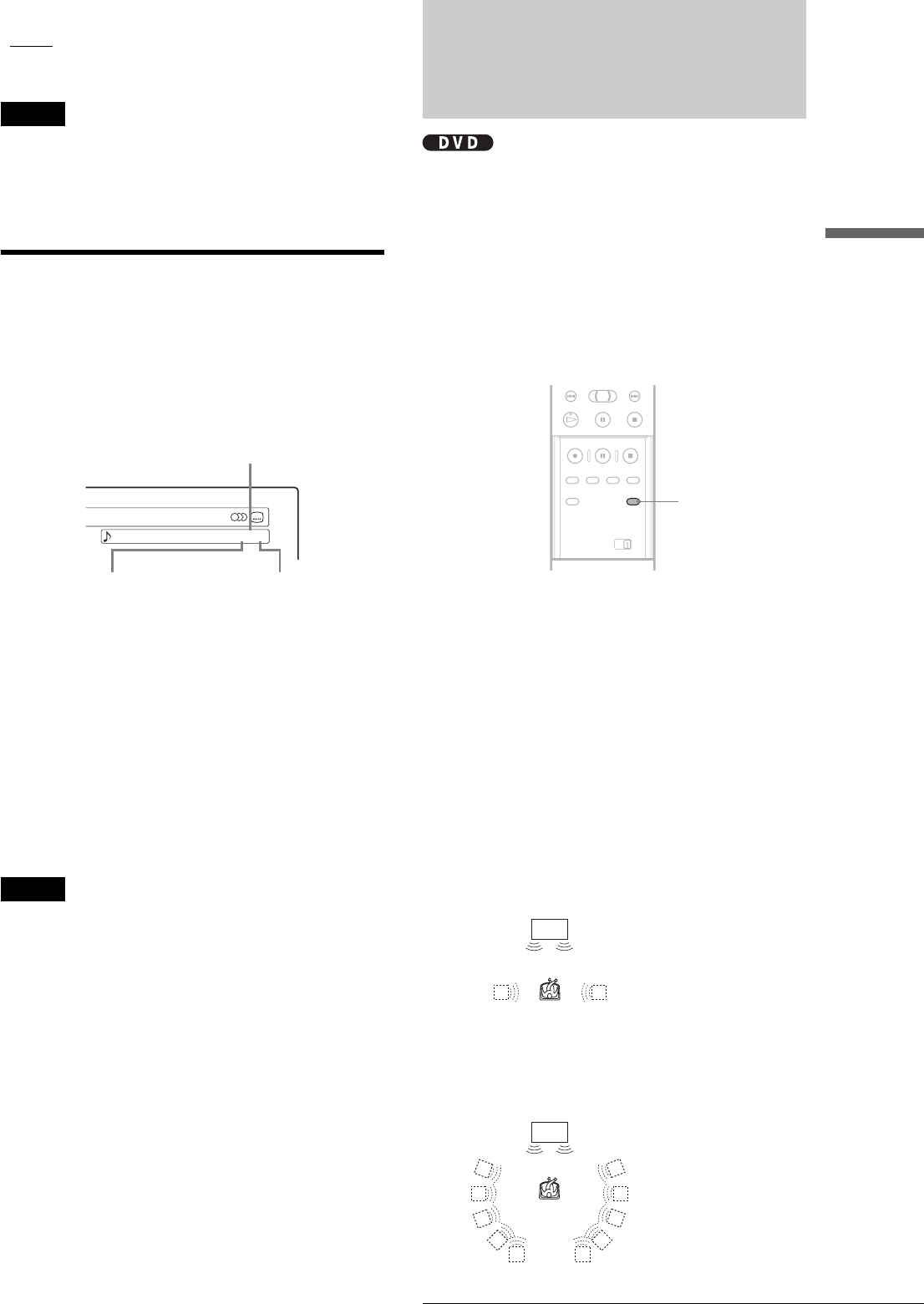
45
TV Virtual Surround Settings (TVS)
Playback
◆When playing a CD
The default setting is underlined.
•Stereo:
The standard stereo sound
• 1/L: The sound of the left channel (monaural)
• 2/R: The sound of the right channel (monaural)
Notes
• Depending on the disc, you may not be able to change the audio format.
• When playing a DVD-RW in VR mode: If you connected to an AV
amplifier (receiver) using the DIGITAL OUT (COAXIAL or
OPTICAL) jack and want to switch between the sound tracks, set
“Dolby Digital” in Audio Setup to “D-PCM.”
Checking the audio signal format
When playing a DVD, you can check the format of the current
audio signal (Dolby Digital, MPEG audio, DTS, PCM, etc.).
Press DISPLAY.
The following display appears.
Example: Dolby Digital 5.1 ch
◆About audio signals
Audio signals recorded in a disc contain the sound elements
(channels) shown below. Each channel is output from a separate
speaker.
• Front (L)
• Front (R)
•Centre
• Rear (L)
• Rear (R)
• Rear (Monaural): This signal can be either Dolby Surround
Sound processed signals or Dolby Digital sound’s monaural
rear audio signals.
• LFE (Low Frequency Effect) signal
Note
If “DTS” is set to “Off” in Audio Setup, the DTS track selection option
will not appear on the screen even if the disc contains DTS tracks
(page 79).
TV Virtual Surround
Settings (TVS)
When you connect a stereo TV or two front speakers, TVS (TV
Virtual Surround) lets you enjoy surround sound effects by using
sound imaging to create virtual rear speakers from the sound of
the front speakers (L: left, R: right) without using actual rear
speakers. If the player is set up to output the signal from the
DIGITAL OUT (OPTICAL or COAXIAL) jack, the surround
effect will only be heard when “DOLBY DIGITAL” is set to
“D-PCM.”
TVS was developed by Sony to produce surround sound for
home use using just a stereo TV.
Press SUR repeatedly during playback to select
one of the TVS sounds.
Refer to the following explanations given for each item.
•Off
•Dynamic
•Wide
•Night
• Standard
TV Virtual Surround modes
◆Dynamic
Creates one set of virtual rear speakers from the sound of the
actual front speakers (L, R) as shown below.
This mode is effective when the distance between the front L and
R speakers is short, such as with built-in speakers on a stereo TV.
◆Wide
Creates five sets of virtual rear speakers from the sound of the
actual front speakers (L, R) as shown below.
This mode is effective when the distance between the front L and
R speakers is short, such as with built-in speakers on a stereo TV.
1 : English DolbyDigital 3/2.1
Rear (L/R)
Front (L/R)
+ Centre
LFE (Low Frequency
Effect)
SUR
TV
TV
,continued


















